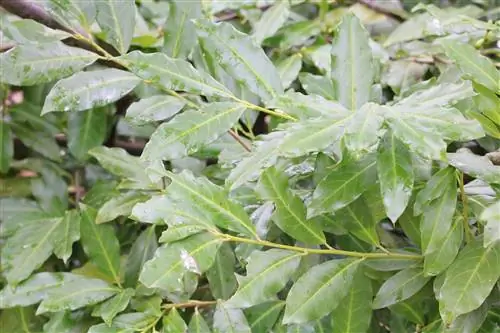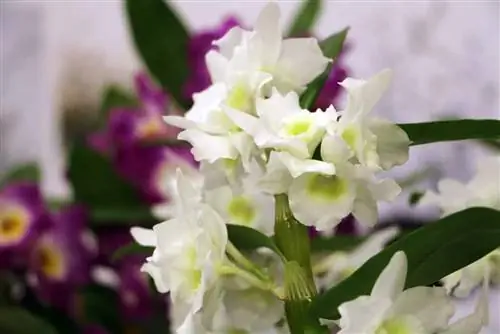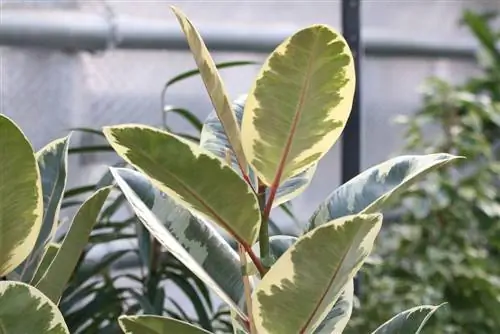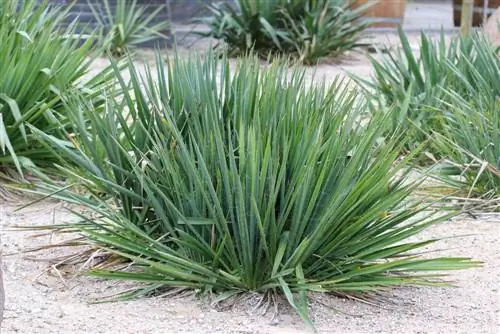- Author admin [email protected].
- Public 2023-12-17 03:39.
- Last modified 2025-01-24 12:45.
In waxed form, the amaryllis enhances many arrangements, especially at Christmas. Unfortunately, their flowers only last a few days. Is it possible to stimulate the plant to produce flowers again even after it has withered for the first time? What care measures are required for this? In this guide, Amaryllis lovers will find useful tips for care after flowering.
Difference between waxed and natural amaryllis
The amaryllis is commercially available with waxed and natural bulbs. The latter blooms every year because the plant stores its nutrients in the bulb. Unfortunately, the waxed version is only one year old in this condition. But what is the purpose of wax if it reduces durability? Above all, aesthetic reasons play an important role. Since the knight's star is primarily in season during the Christmas season, the flower should bloom during Advent. By treating the bulb with wax, florists add all the important nutrients to the plant so that the flower opens just a few days after purchase. Neither pots nor substrate are required for cultivation. A waxed amaryllis does not require any care. The wax layer also protects the onion from drying out.
Tip:
The amaryllis loves bright, warm locations. Room temperatures around 20°C are optimal. Unfortunately, the knight's star only blooms for a short time. However, changing the location to a dark, cool bedroom can prolong flowering.
Does the waxed amaryllis bloom a second time?
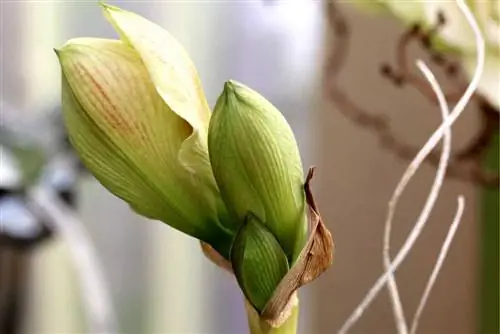
By sealing the amaryllis bulb with wax, the dealer removes the soil. This prevents the growth of new root strands. Since these form the basis for the above-ground growth of any plant, the amaryllis cannot produce any more flowers. For this purpose, it lacks the nutrients and water supply. Only a few leaves could follow, which the plant produces from the remaining nutrients stored in the bulb.
Care after flowering
If the amaryllis obtains the stored nutrients from the waxed onion, it shrinks. Using a sharp object it is possible to carefully separate the wax layer and expose the bulb. Now it's worth careful checking. Are there any small roots visible? Then there is hope of getting the amaryllis to bloom for the second time. Florists do not always remove the plant soil completely. In this case, the gardener plants his knight star in soil and practices patience.
- choose permeable potting soil
- half of the bulb sticks out of the substrate
- water lightly
- care equivalent to an unwaxed amaryllis (see below)
Tip:
In addition to the wax layer, the gardener should also remove the outer covering of the bulb before planting it in the ground. This measure serves to protect against pests.
Care before re-blooming
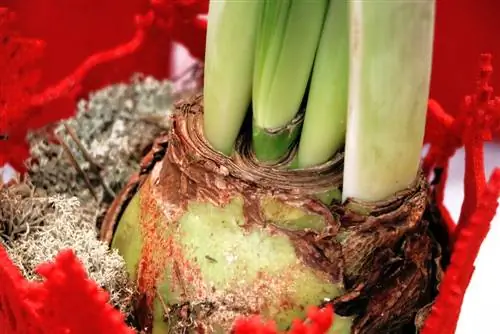
The planting time for an amaryllis is between October and April. So if the plant has had a flower at Christmas, the gardener can then immediately plant it in fresh substrate. Please note the following when caring for it:
- choose a bright location
- water moderately
- Increase the amount of water when growth is visible
- Avoid waterlogging
- Rotate the plant pot regularly (the amaryllis grows towards the light)
Note:
Hippeastrum also tolerates short periods of drought. However, too much water is harmful. Consequently, the stem becomes soft and unstable. In addition, the plant then shoots up explosively. It is very likely that the plant will break.
Care during re-flowering
With the preparation described above for renewed flowering, there is no difference to a natural amaryllis. The following care measures are important during the flowering period:
- no direct sun
- Ideal temperature is 18°C to 21°C
- moderate watering (every 3 to 4 days)
- fertilize with liquid fertilizer for flowers
Tip:
Hippeastrum is also suitable as a cut flower. However, when kept in a glass, the water must be neither too warm nor too cold. Unfavorable temperatures reduce shelf life.
Care after re-flowering
If the amaryllis begins to wilt, the gardener first plucks off the first brown petals. He later cuts off the entire stem just above the substrate. Only if the stem has green leaves should you leave them on the plant. They serve as important nutrient stores and are a guarantee of renewed flowering. Otherwise the knight's star will simply sprout. A shady location is ideal from May to August. The plant feels particularly comfortable in the fresh air (in the garden or on the balcony) in the summer months. However, the gardener must protect them from hungry snails outdoors.
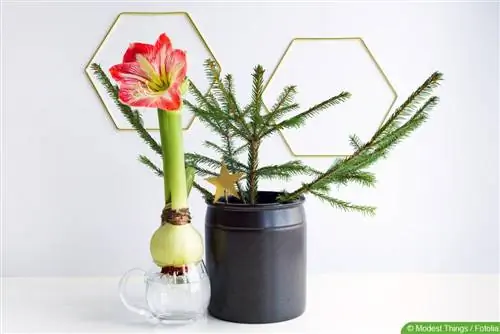
The rest phase begins at the end of August, during which the amaryllis stops growing. From then on, the gardener stops adding fertilizer. The substrate is allowed to dry out. A dark location is now important. Six to eight weeks later, when the planting time begins, the gardener pots the plant into fresh substrate. Now the cycle closes and the care described above begins again. In this way it is possible to make even a waxed amaryllis bloom again for years.
Note:
The amaryllis should be kept out of the reach of pets. The plant is slightly poisonous.


